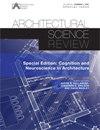热气候条件下基于PCMs的室内热行为数值研究
IF 1.8
3区 艺术学
0 ARCHITECTURE
引用次数: 12
摘要
实现室内热舒适对生产力至关重要,特别是在教育环境中,因此最近引起了相当大的关注。相变材料(PCMs)集成到各种建筑构件中已被用于提高室内温度。在这项研究中,通过模拟来确定将宏观封装的biopcm集成到教育建筑报告厅的墙壁和天花板上的有效性。模拟考虑了炎热的气候和每小时15次换气的夜间通风控制,以提高室内温度。使用EnergyPlus软件,对不同的PCM熔化温度(25、27和29℃)和厚度进行了模拟。当PCM的熔化温度为27℃时,其室内温度显著降低(0.5-3.3℃)。此外,将层厚增加到3.75 cm对温度的影响不大,这表明夜间充电过程不完全。图形抽象本文章由计算机程序翻译,如有差异,请以英文原文为准。
Numerical investigation of the indoor thermal behaviour based on PCMs in a hot climate
Achieving indoor thermal comfort is essential for productivity, especially in educational environments, and hence has recently attracted considerable attention. Phase change materials (PCMs) integrated into various building components have been used to improve the indoor temperature. In this study, the effectiveness of integrating macro-encapsulated BioPCMs into the walls and ceilings of lecture halls in an educational building was determined via simulation. The simulations considered a hot climate coupled with controlled night ventilation of 15 air change per hour for enhancing the indoor temperature. Using the EnergyPlus software, simulations were performed for different PCM melting temperatures (25, 27 and 29°C) and thicknesses. The PCM with a melting temperature of 27°C yielded a notable reduction (0.5–3.3°C) in the indoor temperature. Furthermore, increasing the layer thickness to 3.75 cm had little effect on the temperature, as indicated by the incomplete charging process during the night. GRAPHICAL ABSTRACT
求助全文
通过发布文献求助,成功后即可免费获取论文全文。
去求助
来源期刊

Architectural Science Review
ARCHITECTURE-
CiteScore
4.80
自引率
8.70%
发文量
34
期刊介绍:
Founded at the University of Sydney in 1958 by Professor Henry Cowan to promote continued professional development, Architectural Science Review presents a balanced collection of papers on a wide range of topics. From its first issue over 50 years ago the journal documents the profession’s interest in environmental issues, covering topics such as thermal comfort, lighting, and sustainable architecture, contributing to this extensive field of knowledge by seeking papers from a broad geographical area. The journal is supported by an international editorial advisory board of the leading international academics and its reputation has increased globally with individual and institutional subscribers and contributors from around the world. As a result, Architectural Science Review continues to be recognised as not only one of the first, but the leading journal devoted to architectural science, technology and the built environment. Architectural Science Review publishes original research papers, shorter research notes, and abstracts of PhD dissertations and theses in all areas of architectural science including: -building science and technology -environmental sustainability -structures and materials -audio and acoustics -illumination -thermal systems -building physics -building services -building climatology -building economics -ergonomics -history and theory of architectural science -the social sciences of architecture
 求助内容:
求助内容: 应助结果提醒方式:
应助结果提醒方式:


